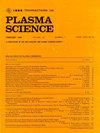氨合成中等离子体内和后等离子体催化配置的比较研究:温度的影响
IF 1.3
4区 物理与天体物理
Q3 PHYSICS, FLUIDS & PLASMAS
引用次数: 0
摘要
作为一种重要的化学物质,氨在人类生活和社会中发挥着重要作用。然而,传统的工业合成氨工艺会释放大量二氧化碳。等离子体催化可激活气体分子并降低活化能,因此是该反应的一个很有前景的途径。目前的研究表明,等离子体放电区域内的氨分解极大地限制了等离子体内催化(IPC)配置的氨生产。另一方面,在等离子体后催化(PPC)配置中,活性物种迁移到下游催化剂区域时密度会降低,这对等离子体催化合成氨不利。因此,以 Ni/Al2O3 为催化剂,研究了不同等离子催化构型下氨合成的性能。在 N2:H2 流量比为 3:1 的实验中,PPC 配置下的氨气浓度为 224.53~\mu $ mol/h,而 IPC 配置下的合成率达到 592.30~\mu $ mol/h。这表明,在常温下,位于卸料区的催化剂加快了氨的合成。此外,还在不同温度下进行了 IPC 和 PPC 配置下的氨合成实验。实验结果表明,在温度低于 200 °C 时,IPC 配置的氨气浓度较高。超过 200 ℃ 时,两种构型的氨气浓度更加接近。最后,分析了 IPC 和 PPC 配置下的氨合成反应机理,有助于阐明 IPC 和 PPC 配置下氨合成性能的差异。本文章由计算机程序翻译,如有差异,请以英文原文为准。
A Comparative Study of In- and Post-Plasma Catalysis Configurations for Ammonia Synthesis: Effect of Temperature
As an important chemical, ammonia plays an important role in human life and society. Nevertheless, there is a substantial release of CO2 for the traditional industrial ammonia synthesis process. Plasma catalysis can activate gas molecules and lower activation energy, making it a promising avenue for this reaction. The current study reveals that ammonia decomposition within the plasma discharge region significantly limits ammonia production for in-plasma catalysis (IPC) configuration. On the other hand, for post-plasma catalysis (PPC) configuration, the densities of reactive species will decrease when migrating to the downstream catalyst region, which is unfavorable for plasma catalytic ammonia synthesis. Therefore, the performances of ammonia synthesis under different plasma catalytic configurations have been investigated with the catalyst of Ni/Al2O3. In experiments with a N2:H2 flow rate ratio of 3:1, the ammonia concentration under PPC configuration was
$224.53~\mu $
mol/h, while the synthesis rate under IPC configuration reached
$592.30~\mu $
mol/h. This indicates that the catalyst located in the discharge zone accelerates ammonia synthesis under ambient temperature. Furthermore, ammonia synthesis experiments were conducted under IPC and PPC configurations at different temperatures. Experimental results show higher ammonia concentrations with IPC configuration at temperatures below 200 °C. Beyond 200 °C, the ammonia concentrations between the two configurations become closer. Finally, the ammonia synthesis reaction mechanisms under IPC and PPC configurations are analyzed, which help to clarify the difference in ammonia synthesis performance under IPC and PPC configurations.
求助全文
通过发布文献求助,成功后即可免费获取论文全文。
去求助
来源期刊

IEEE Transactions on Plasma Science
物理-物理:流体与等离子体
CiteScore
3.00
自引率
20.00%
发文量
538
审稿时长
3.8 months
期刊介绍:
The scope covers all aspects of the theory and application of plasma science. It includes the following areas: magnetohydrodynamics; thermionics and plasma diodes; basic plasma phenomena; gaseous electronics; microwave/plasma interaction; electron, ion, and plasma sources; space plasmas; intense electron and ion beams; laser-plasma interactions; plasma diagnostics; plasma chemistry and processing; solid-state plasmas; plasma heating; plasma for controlled fusion research; high energy density plasmas; industrial/commercial applications of plasma physics; plasma waves and instabilities; and high power microwave and submillimeter wave generation.
 求助内容:
求助内容: 应助结果提醒方式:
应助结果提醒方式:


